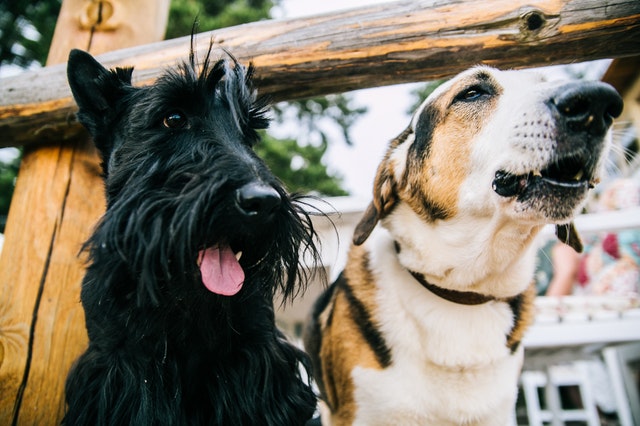2019-06-11

Is your dog hiding behind you in the park when a stranger or a dog approaches? Does he get terrified and anxiously barks at guests he meets for the first time? If the answer is yes, it is necessary to tackle this behavior as soon as possible, as your dog’s fears may develop into nightmares that will affect his mental health, and might even attack someone. Therefore, for safety reasons, it is essential for you to socialize your dog and bring him back to a carefree and happy life.
Before starting the training, you should know:
• This kind of training is time consuming so you have to be prepared to spend a lot of time on it.
• A good relationship between the pet and the owner can implicitly boost the training, so it is necessary to establish a strong bond with your dog.
• What is more, the use of obedience commands will create incentives and reinforce the training, which can also shorten the training duration.
• The ideal age to socialize a puppy is between 3 and 12 weeks. During this time it is important to expose your dog to people (from children to seniors, males and females, differently dressed persons), animals (other dogs, cats and creatures in nature), and dog-friendly places (parks, beaches and buildings) in a positive way.
• An older dog needs more time to completely overcome his fears.
We will list some tips to bring your dog closer to new people and dogs.
How to train your dog to be friendly to new people?
Introducing a shy dog to new people is a slow process. How long it will take to gently socialize with new people depends on what he has experienced. For example, a rescue dog might have been sent to a rescue center because he was abused by a tall man. This experience could cause him to be fearful of tall males. Observe what kind of people will pose a threat to your dog and focus the training on similar groups.
1. Isolate your dog or keep him at a distance. When a new guest visits your home, separate your dog in a room and leave the door ajar so he can come out if he wants. If you walk your shy friend in the park, try to get past the new person quickly, or avoid a direct encounter by taking a different route.
2. Ask the new person not to approach, speak to or pet your dog in advance. You should stand between them, which can create a protective barrier for your dog. Until your pet moves his first step without fear, he can accept this type of contact.
3. Offer treats to your dog from the new person. Treats can lower canine alert, so it is advisable to ask the new person to put the treats on the floor without making eye contact with your dog. If the dog comes and eats the treats, throw them nearer and nearer to the person giving the treats. Then your dog will get closer and closer to the person without high alert. Don’t reward your dog if he continues to be shy. Rewarding your shy dog could delay the training process and may lead him to continue to be afraid and shy. Only when he approaches the new person positively and wags his tail, it is time for the person to caress him lightly.

How to train your dog to be friendly to new dogs?
Lots of factors can make your dog feel uncomfortable and nervous when meeting other new animals, such as a personality trait, inadequate socialization during puppyhood, and past experience. Luckily, we can reduce or eliminate this fear through positive reinforcement with a well-known calm dog.
1. Choose a controllable location. It is best to start this process in an outdoor location with lots of space to keep the situation under control and to have other items that distract your dog.
2. Find a well-trained dog. You should begin by introducing your dog to a well-trained and socialized dog, which can avoid lots of conflicts as well as help your dog learn how to socialize.
3. The first meeting, stage one. Both your dog and the potential friend should be leashed by the handlers. At the first meeting, keep away from the other dog and his handler. Your dog might pay close attention to them, coupled with anxiety, so show him some treats to distract him from his possible attack. Once he calms down, feed him the treats as a reward.
4. The first meeting, stage two. Then you could gradually approach the new dog, but always stop when his fear recurs. When they finally meet, allow them to sniff each other. During this process, it is important that you encourage your dog with treats when he behaves confidently and joyfully, as this positive reinforcement can teach your dog that meeting new dogs is approved and rewarded.
5. The first meeting, stage three. Do not pull the leash tightly if your dog is not willing to meet the other dog. Otherwise, forced behavior can cause a negative reaction in your dog. Repeat this training, however, so that your dog increasingly loses the fear of potential new friends.